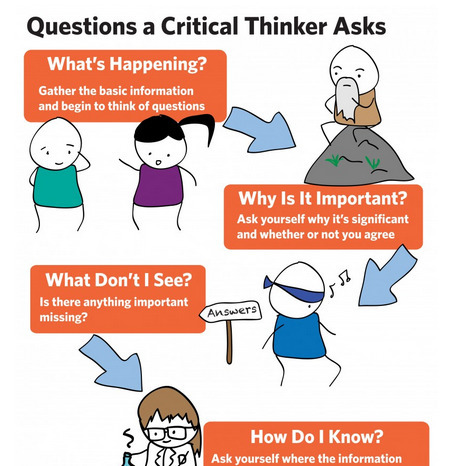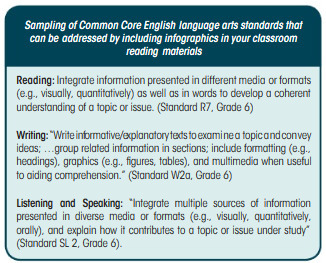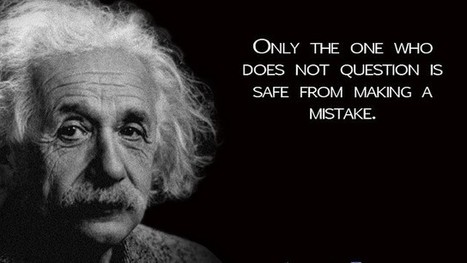"Understand what critical thinking means and how critical thinkers think. Learn to express yourself clearly and develop a balanced argument."
Get Started for FREE
Sign up with Facebook Sign up with X
I don't have a Facebook or a X account
 Your new post is loading... Your new post is loading...
 Your new post is loading... Your new post is loading...

niftyjock's curator insight,
January 19, 2014 7:12 PM
I often get very bored with infographics, but these techniques will help me not only read them better but have a go at c reating my own 
Greenwich Connect's curator insight,
January 20, 2014 7:28 AM
Slightly overblown tone, presumably to help what is a useful overview of infographics sound more "academic" - read between the lines for what students should think through and how they should approach their own infographic production 
Kerri Schaub's curator insight,
January 20, 2014 8:10 AM
Visualizing is a powerful multisensory technique. |
Nancy Jones's curator insight,
March 18, 2014 2:52 PM
Risk taking and questioning have always been learning skillls. It just seems that students, and possibly their parents, aren't willing to acknowledge them as the best way to learn. The whole idea of thinking critically and making a "best guess' seem to be unacceptable to some folks. What does that say about the whole quality/gift of wonder?

Sophie Smith's comment,
March 1, 2013 8:22 PM
That's okay! I found it a great article that will help me keep in mind that technology needs to be used smartly and not necessarily to excess to help students learn to use and explore it.

Sophie Smith's comment,
March 1, 2013 8:22 PM
That's okay! I found it a great article that will help me keep in mind that technology needs to be used smartly and not necessarily to excess to help students learn to use and explore it.
Christina Paxton's curator insight,
June 25, 2014 6:48 AM
Outlines the Pros and Cons of Ed Tech in the classroom. Presents several real-world possibilities for incorporating technology in the classroom. |













This site provides a range of materials to help students learn critical thinking skills. The resources include:
* A video that helps guide you on ways to improve your critical thinking skills.
* An infographic (see image above) that helps you visualize the questions to consider asking.
* Top Tips for Critical Thinking - Five tips are provided with additional information under each.
* An Apply Section which has three questions that students may answer.
* Enhance Your Wellness - learn a few tips that will help your mental and physical health that may allow you to improve your focus and your grades.
There is a lot of excellent information in this post. Although it is geared to college students much of this may be used in upper elementary, middle and high school.